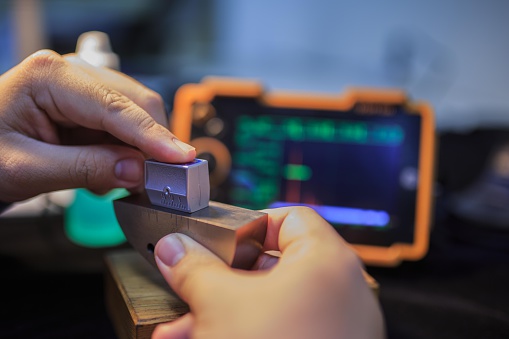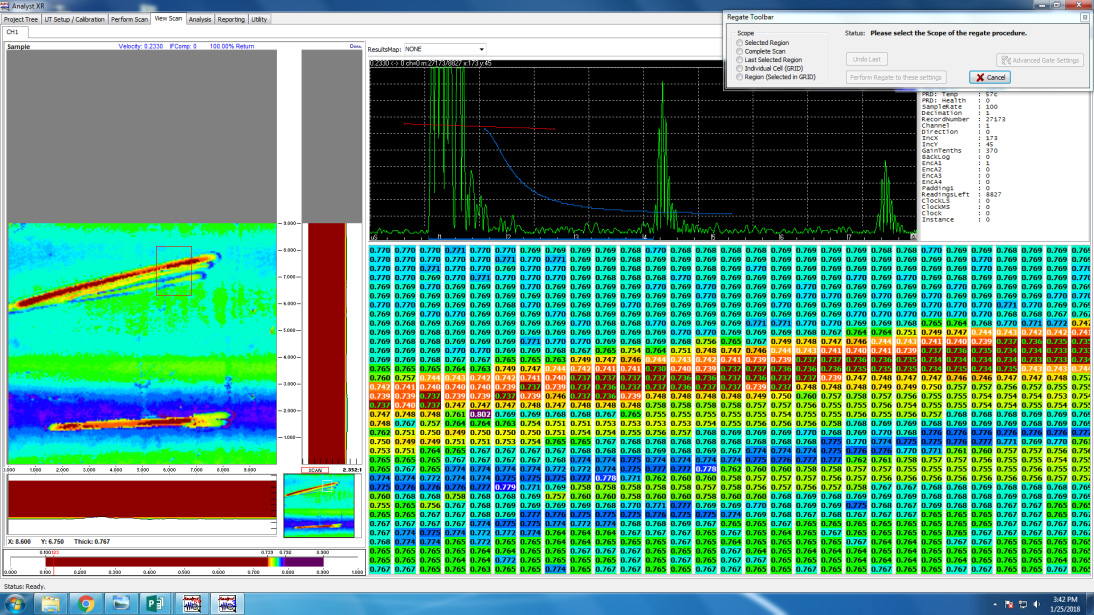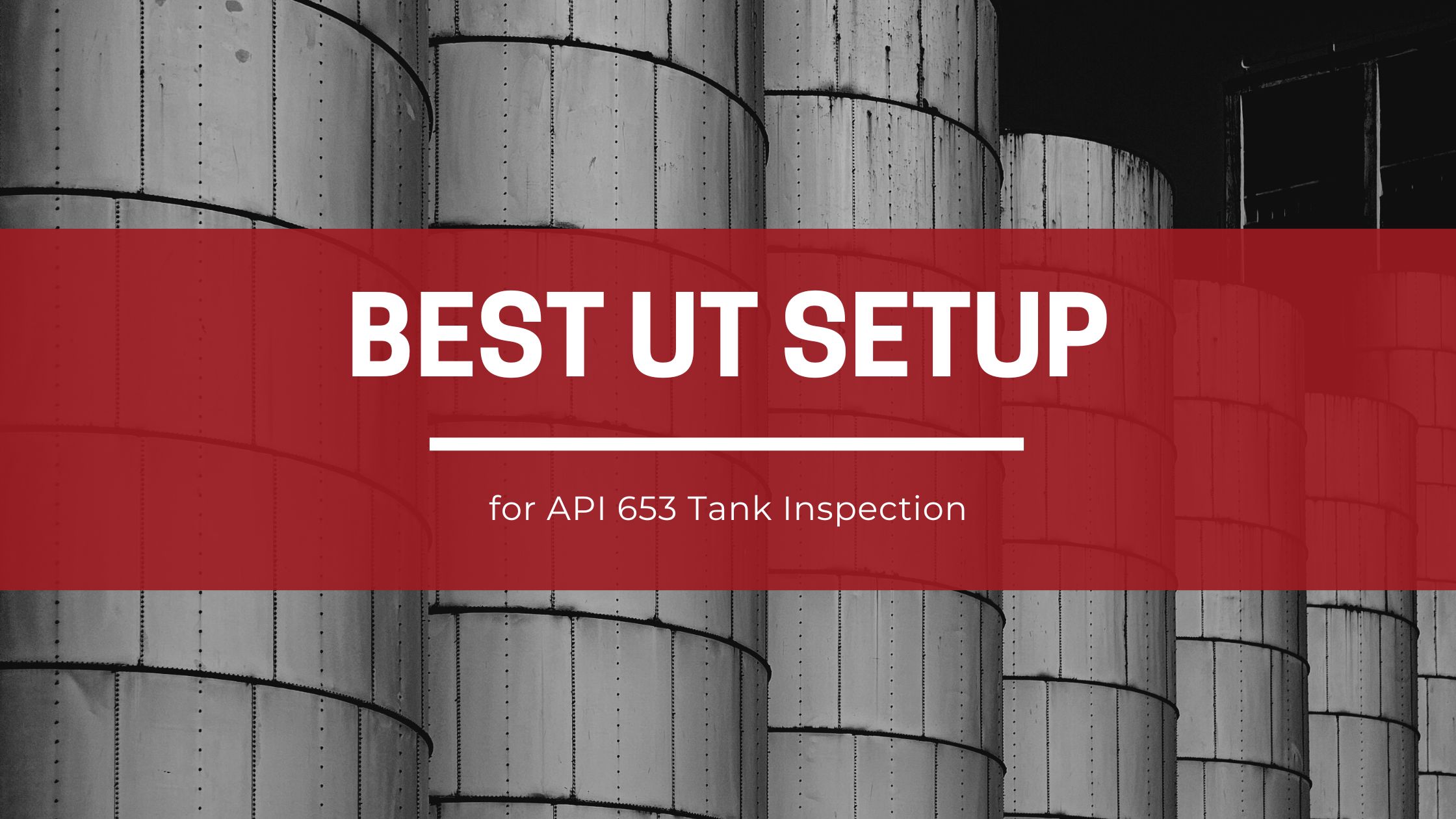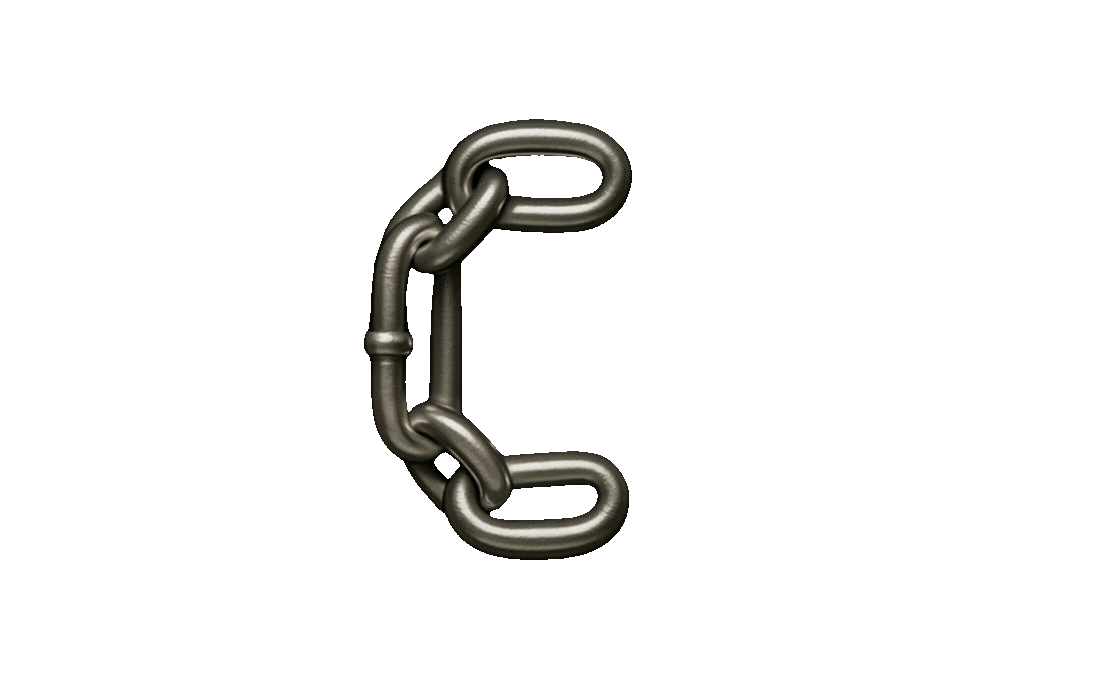Table of Contents
Why Calibration Is Vital
Accurate probe calibration is essential for dependable ultrasonic testing (UT). Without proper calibration, even the best flaw detector or thickness gauge can misrepresent defect size or wall thickness.
Calibration ensures that the ultrasonic system’s timing, gain, and sensitivity align with known reference values, maintaining measurement accuracy and code compliance. It also ensures traceability—a crucial requirement for ISO and ASME-certified inspections.
For background on how probe type impacts accuracy, see Single vs Dual vs Phased Array Probes and Ultrasonic Testing Basics for a foundation on sound propagation and velocity.
Calibration Blocks & Standards
Reference Blocks
Calibration blocks simulate real-world reflectors and ensure consistency between measurements. Common types include:
- IIW Blocks – For angle-beam calibration and sound path verification.
- V1 / V2 Blocks (BS 2704) – Used for probe index and beam angle verification.
- Step or Thickness Blocks – For velocity and zero-offset calibration.
- DSC / DC Blocks – Used for dual-element or corrosion probes.
- Custom Reference Blocks – Machined for unique geometries or specialized materials.
International Calibration Standards
Adhering to published standards keeps results consistent and audit-ready:
- ASTM E317 – Standard Practice for Evaluating Performance Characteristics of Ultrasonic Pulse-Echo Testing Systems.
- ISO 2400 – Standard Reference Block No. 1 for calibration of ultrasonic flaw detection equipment.
- ASME Section V, Article 4 – Governs calibration for weld inspection.
- API 5UE / API 650 – Defines ultrasonic inspection and tank testing guidelines.
Following these ensures calibration traceability and compliance across global codes.
Methods of Probe Calibration
Echo (Distance-Amplitude) Calibration
The most common calibration method, where time-base and gain are adjusted to match known reflector distances and amplitudes on a block. A DAC (Distance Amplitude Correction) curve is created to compensate for attenuation at depth.
Sensitivity & Reference Reflector Calibration
Known reflectors—like flat-bottom holes, notches, or side-drilled holes—are used to set sensitivity. This ensures even small flaws register clearly above the system’s noise threshold.
Velocity & Zero-Offset Calibration
Conducted on step or flat blocks to confirm the instrument’s sound velocity and zero offset. This keeps thickness and flaw depth measurements aligned with physical distances.
Angle & Index Calibration
For angle-beam and phased array probes, IIW or V1 blocks verify refracted angle and probe index point. In phased array systems, software-based angle calibration aligns the electronic focal law with the actual material angle.
Verification & Repeat Checks
Daily and Periodic Verification
Standards like ASTM E317 and ASME Section V require verification at key intervals:
- Start of shift: Verify time-base, amplitude, and sensitivity.
- During inspection: Check mid-shift to compensate for couplant or temperature variations.
- End of shift: Confirm that no drift occurred before saving data.
Tolerances
If readings deviate by more than ±1 dB amplitude or ±2% distance, recalibration is required before continuing work.
Common Mistakes During Calibration
- Skipping angle verification or assuming probe markings are correct.
- Ignoring temperature drift that alters velocity.
- Using damaged or corroded calibration blocks.
- Failing to document calibration parameters for traceability.
- Over-relying on auto-calibration without confirming echo behavior.
Maintenance & Calibration Schedules
Frequency Guidelines
- Portable UT gauges: Verify daily or before each inspection shift.
- Phased array systems: Perform full calibration monthly or after firmware updates.
- Factory calibration: Once per year, or per manufacturer recommendation for ISO 9001 compliance.
What If Calibration Drifts?
If a drift is detected:
- Stop testing immediately.
- Re-calibrate with reference blocks.
- Re-inspect data collected since the last valid check.
- Record corrective actions per QA/QC procedures.
Care of Calibration Blocks
Keep calibration blocks clean and dry, stored at stable temperature and humidity. Avoid scratches or corrosion that could affect reflector geometry.
What to Do Next
Enhance Accuracy, Extend Probe Life
Proper calibration ensures precision and protects data integrity. Align your workflow with ASTM E317 and ISO 2400, and perform regular verification to ensure long-term reliability.
To strengthen your inspection setup, revisit Single vs Dual vs Phased Array Probes and Ultrasonic Testing Basics for supporting principles and techniques.






